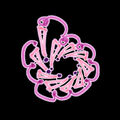Template:Selected anniversaries/July 5: Difference between revisions
No edit summary |
No edit summary |
||
| Line 22: | Line 22: | ||
||1867: A. E. Douglass born ... astronomer. | ||1867: A. E. Douglass born ... astronomer. | ||
||1874 | ||1874: Eugen Fischer born ... physician and academic ... Nazi. | ||
||1888 | ||1888: Herbert Spencer Gasser born ... physiologist and academic, Nobel Prize laureate. | ||
||1888 | ||1888: Louise Freeland Jenkins born ... astronomer and academic. | ||
||1891 | ||1891: John Howard Northrop born ... chemist and academic, Nobel Prize laureate. | ||
||1904 | ||1904: Ernst Mayr born ... biologist and ornithologist. | ||
|File:Emmy Noether.jpg|link=Emmy Noether (nonfiction)|1905: Mathematician [[Emmy Noether (nonfiction)|Emmy Noether]] publishes new class of [[Gnomon algorithm functions]] which detect and prevent [[crimes against mathematical constants]]. | |File:Emmy Noether.jpg|link=Emmy Noether (nonfiction)|1905: Mathematician [[Emmy Noether (nonfiction)|Emmy Noether]] publishes new class of [[Gnomon algorithm functions]] which detect and prevent [[crimes against mathematical constants]]. | ||
||Paul Karl Ludwig Drude | ||1906: Paul Karl Ludwig Drude dies ... physicist specializing in optics. He wrote a fundamental textbook integrating optics with Maxwell's theories of electromagnetism. In 1894 he was responsible for introducing the symbol "c" for the speed of light in a perfect vacuum. | ||
||1911 | ||1911: Endel Aruja born ... physicist and academic. | ||
|| | ||1911: George Johnstone Stoney dies ... physicist. He is most famous for introducing the term electron as the "fundamental unit quantity of electricity". Pic. | ||
|| | ||1915: The Liberty Bell leaves Philadelphia by special train on its way to the Panama–Pacific International Exposition. This is the last trip outside Philadelphia that the custodians of the bell intend to permit. | ||
|| | ||1922: Edwin Thompson Jaynes born ... was the Wayman Crow Distinguished Professor of Physics at Washington University in St. Louis. He wrote extensively on statistical mechanics and on foundations of probability and statistical inference, initiating in 1957 the MaxEnt interpretation of thermodynamics, as being a particular application of more general Bayesian/information theory techniques (although he argued this was already implicit in the works of Gibbs). Jaynes strongly promoted the interpretation of probability theory as an extension of logic. | ||
||René-Louis Baire | ||1930: Walter Lewis Baily, Jr. born ... mathematician. Pic. | ||
||1932: René-Louis Baire dies ... mathematician most famous for his Baire category theorem, which helped to generalize and prove future theorems. Pic. | |||
File:The Safe-Cracker.jpg|link=The Safe-Cracker|1939: "''The Safe-Cracker'' was not a [[math crime]]," says art critic and alleged math criminal [[The Eel]]. "I was looking for evidence that I was framed. And I found it." | File:The Safe-Cracker.jpg|link=The Safe-Cracker|1939: "''The Safe-Cracker'' was not a [[math crime]]," says art critic and alleged math criminal [[The Eel]]. "I was looking for evidence that I was framed. And I found it." | ||
Revision as of 13:49, 15 October 2018
1687: Isaac Newton publishes Philosophiæ Naturalis Principia Mathematica ("Mathematical Principles of Natural Philosophy"). Principia states Newton's laws of motion, forming the foundation of classical mechanics; Newton's law of universal gravitation; and a derivation of Kepler's laws of planetary motion (which Kepler first obtained empirically).
1939: "The Safe-Cracker was not a math crime," says art critic and alleged math criminal The Eel. "I was looking for evidence that I was framed. And I found it."
1942: Mathematician Oskar Bolza dies. He is known for his research in the calculus of variations; his work on variations for an integral problem involving inequalities later became important in control theory.
2009: Discovery of the Staffordshire hoard, the largest hoard of Anglo-Saxon gold ever discovered in England, consisting of more than 1,500 items found near the village of Hammerwich, near Lichfield, Staffordshire.
2017: Signed first edition of Violet Spiral purchased for an undisclosed sum by "an eminent Gnomon algorithm theorist from New Minneapolis, Canada.
2018: Signed first edition of Pin Man #1 stolen from the Louvre in a daring daylight robbery allegedly masterminded by Baron Zersetzung.





